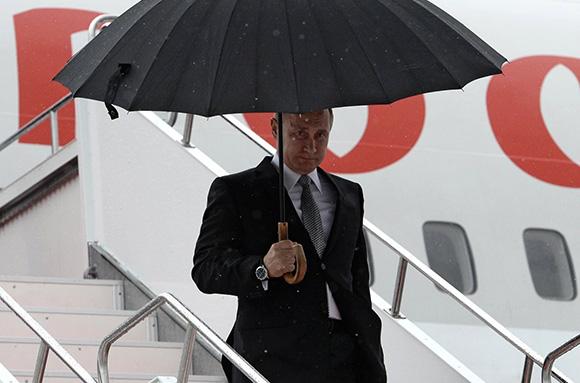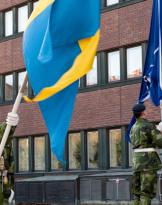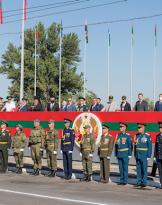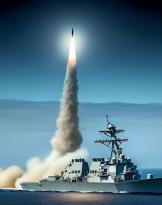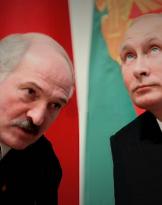Moscow's actions worry NATO forces and the US. The latter, in fact, have always declared that they "do not want to support the Syrian dictatorship". In this context, the forces that play in the field have in common only the goal of defeating ISIL.
In the event that Russia wants to conquer every meter of Syro-Iraqi land, it will run a series of risks. A first risk is geographical, the area is too large. The Syro-Iraqi area is of 623.497 km², so the whole region would need a high military presence that could secure the territory.
A second risk derives from the cities, where each village or urban agglomeration that has suffered the destructions of a civil war, could benefit the terrorists who employ guerrilla tactics called. hit and hide in the rubble, such as to put the security forces in serious difficulties.
A third risk, which is connected to the second, is represented by the forces on the Syrian-Iraqi territory. The lack of dialogue and the continuous armed clashes between biased groups makes it increasingly difficult to stabilize a solid peace throughout the region. These groups divide their territories into governmental, management or influence areas, depending on the type of responsible force. Starting from Iraq it can be said that much of the South from West to East and the central zone are under the control of the Iraqi government. Instead a part of the territories of the North-West and of the Central West is under the occupation and the influence of the ISIL. A well-established territorial situation concerns the territory of the North-East and part of the North-West of Iraq, where the Kurdish Iraqi forces defend their hard-won territories. The context of Syrian forces is more diverse than that of Iraq. Almost the entire area of Central and North-East Syria is under the influence of ISIL fighters, although most of the area is deserted and uninhabited. The Syrian North-East, as a prolongation of the Kurdish-Iraqi area, is placed under the influence of Kurdish Syrian forces and also of mixed Kurdish-Arab militias. The North-West area is represented by the control of the opposition forces to the Syrian government and by the Al Nusra front. Instead we find in the Central West the control of the government forces of Assad, flanked also by a group of Hizbullah, coming from Lebanon. The latter have also settled in the south-west of Syria. As regards some territories of the South-West, the territories are traversed by the opposition forces to the Damascus government. From the diverse world of armed groups, it is understood that the risks of a more extensive asymmetric war could increase, such as the one that the Americans and its allies fought both in Iraq and in Afghanistan. It is demonstrated, on the basis of the military experiences just mentioned, that to win the asymmetric wars it is not enough to have a good military superiority and an avant-garde technological capability. Furthermore, in asymmetric warfare, intelligence tools could foresee the dangers of terrorist attacks but could not prevent the eradication of these criminal phenomena. The use of bomb-men, car bombs, kidnappings, reprisals, white-weapon fights, human shields, religious indoctrination, are only part of the strategies adopted by the current jihadist terrorism.
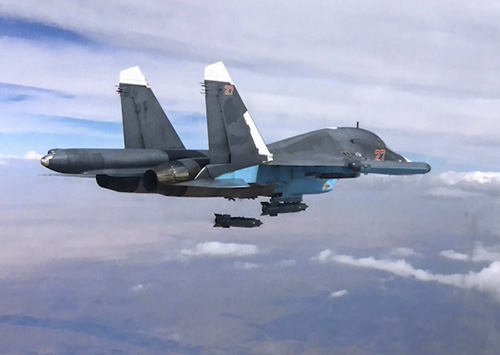 A fourth risk is characterized by the difficult civil coexistence between certain ethnic and religious groups. To exemplify it is possible to recall the struggle for the independence of the Kurdish people both in Syria and in Iraq. The Kurds do not have a real language or a single religion. The Kurdish population was not exempt from persecution and massacres. Those who will re-establish the Syrian-Iraqi balance will have to protect the Kurdish identity, most affected by the ISIL threat and the Syrian bombs, without forgetting that all the other ethnic forces persecuted will have to be adequately defended and guaranteed.
A fourth risk is characterized by the difficult civil coexistence between certain ethnic and religious groups. To exemplify it is possible to recall the struggle for the independence of the Kurdish people both in Syria and in Iraq. The Kurds do not have a real language or a single religion. The Kurdish population was not exempt from persecution and massacres. Those who will re-establish the Syrian-Iraqi balance will have to protect the Kurdish identity, most affected by the ISIL threat and the Syrian bombs, without forgetting that all the other ethnic forces persecuted will have to be adequately defended and guaranteed.
A fifth risk is determined by the impossibility for Moscow to manage more crises. It should not be forgotten that Russia is part of the game of influences in the Ukrainian war.
A sixth risk concerns the Russian economy. The application of EU economic sanctions to Russia, due to the Ukrainian crisis, and the crisis of lower oil prices, has damaged the Russian economy. Under these conditions, Moscow will have to watch over its coffers. To avoid default, Russia will have to remember the US case. The Americans, during the Iraq war, faced enormous expenses, got into debt with the rest of the world. The increase in American war spending was one of the contributing factors of the international financial crisis that broke out in the 2008.
At this point it remains to be seen what the intentions of the West will be with the advance of Russia in Syria and probably in Iraq. In the event that Washington does not cooperate with Moscow in the common fight against terrorism, it will be possible to glimpse a tacit American assent to want to leave the Middle East region, also to shift its interests to the Pacific Ocean, to contain Chinese influence. It is no secret that on many occasions Obama has declared that no soldier will set foot on Syrian soil. But there is another reason of human character, namely that the stars and stripes flag has unfortunately covered many coffins of young American marines who died in Iraq and Afghanistan.
(photo: kremlin.ru / MoD Russian Fed.)

